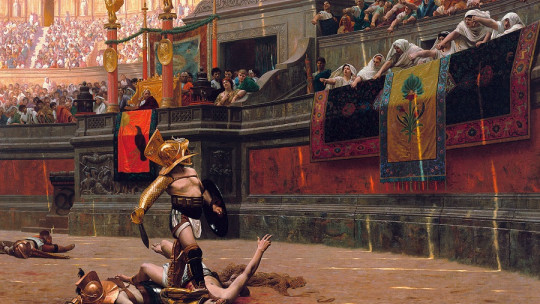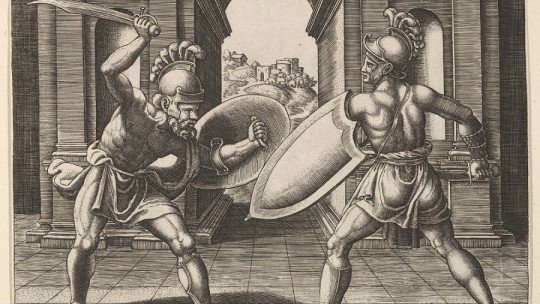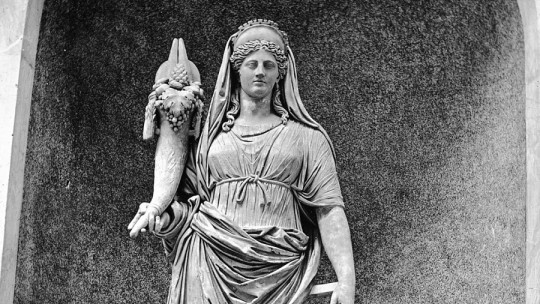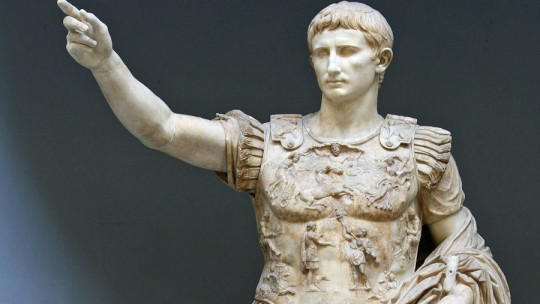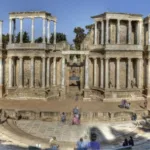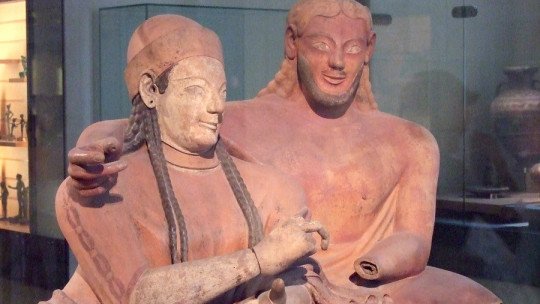When we talk about sports in ancient Rome, gladiator fights or chariot races will undoubtedly come to mind. However, the Romans had a wide variety of physical exercises, and not all of them were great spectacles intended to entertain the public.
In this article we will see what they were the main sports that were practiced in ancient Rome and, above all, what meaning they had in the context of Roman society.
Rome, a culture of sport
Sport is as old as human beings. Usually, ancient Greece is placed as the beginning of sport as a discipline, but we should go back much further in time to find the true origin of sport.
All, absolutely all cultures have had some physical expression , either as part of a religious ritual or simply as entertainment and/or strengthening the body. Rome, of course, was no less. But what was the meaning of sport in ancient Rome?
Religion and spectacle
As in all ancient cultures, sport in Rome began as a religious expression. It had already happened in Greece, well let’s not forget that the Olympic Games and other Greek sports disciplines were destined to satisfy the gods. Sport was, therefore, a ritual sacrifice that men offered to divinity.
At first, Rome was not immune to this religious influence. In fact, the first Roman sporting events are, in fact, religious rituals. In its Sports historyJuan Rodríguez López gives a very clear example: when, in the first years of Rome, the soldiers returned from their military campaigns, some famous horse races were held, for the sole purpose of giving thanks to the gods The winning horse was sacrificed, and its blood was offered to the divinity.
We find this religious content, as we have already noted, in Greece, which had so much influence on Roman culture. But we must not forget the Etruscans either, the mysterious people of unknown origins who were already established in Latium when the first Romans arrived.
This town practiced several sports and, according to Antonio J. Monroy and Gema Sáez, authors of History of sport, from Prehistory to the Renaissance, it was the Etruscans who transferred the mere taste for spectacle to Roman culture. Thus, we find a marked contrast: From Greece, the Romans acquired the sacred sense of sport; of the Etruscans, entertainment which would lead to the famous ludus Roman.
Sport as a unifier of people
If there has been an eminently conquering culture, this has undoubtedly been the Roman culture. Its cultural influence spread throughout the Mediterranean area and even beyond (the British Isles and northern Europe) and, obviously, sporting expression was part of this culture.
Roman sport becomes, in this way, a bringer of cultures. Amphitheaters, circuses and thermal baths are being built in all corners of the empire, and entertainment is becoming globalized Thus, gladiator shows, chariot races or naumaquias (simulated naval battles) multiplied throughout the Roman world and became a tool of cultural identification.
The baths were a very important building in Roman culture (as we will see in the next section), since private sports were practiced there; that is, those that were not intended for mass entertainment. Let’s see it below.
Practicing sports in the Roman baths
It is necessary to get rid of the Roman thermal buildings as a place only for personal hygiene. Could not be farther from the truth. In reality, what is closest to the baths of ancient Rome are our current gymnasiums: a place where you can not only access baths (swimming pools), but also practice sports and social gatherings.
In the Roman baths, countless sports were actually practiced. Let’s analyze them one by one.
1. The spectaculum pugilumor the antecedent of boxing
Related to the Greek pankration, but, apparently, much bloodier The calls spectaculum pugilum They were hand-to-hand fights between two men, who were trying to knock each other down and leave each other unconscious. There were no rounds in current boxing, so the fight ended with the fainting or voluntary departure of one of the fighters. The winner was the one who managed to knock down his opponent three times.
The opponents went out to fight dressed in a kind of underwear and with their hands protected by the caesti, leather gloves with metal reinforcement on the knuckles. We can imagine that, with such an element, blood and torn flesh were common in this type of spectacle.
The spectaculum pugilum They had two aspects: that of mass entertainment and that of training and personal entertainment. The first was usually held in the circus, during breaks between races, and the second took place in the thermal baths arena. Any man who entered the premises could practice pugilum with another ; Generally, this second, more private modality was not as violent as the one that took place in the circuses, since its only objective, in addition to having fun, was to exercise the body.
2. The Lucta or fight
Similar to the previous modality, but with the difference that tripping was allowed in the fight. In the same way that the pugilum, The winner was the one who made the opponent touch the ground three times with any part of the body
3. The quinquertium
This sporting modality combined different exercises: discus or javelin throwing, jumping, racing and wrestling.
Of Greek heritage (like the vast majority of Roman sports), discus or javelin throwing was very common in the thermal baths arenas. The practitioner was allowed three attempts, in which he had to throw the object as far as possible Equally popular were running and jumping, which, as they did not require any special objects, could be practiced even at home, if there was enough space.
4. Ball games: harpastum and the trigon
In the more restricted area of the hot springs, ball games were very popular, as they allowed not only exercise, but also fun with friends. The most popular were the harpastum and the trigon:
He harpastum
Surprisingly similar to today’s American football, the harpastum It had a number of players between five and twelve , divided into two teams. The players had to pass the ball to the members of their team and prevent it from being kidnapped by those of the opposing team. It was played with harpastaa ball filled with sand.
He trigon
This type of ball game only had three players, located at each of the vertices of a triangle The rules were simple: players had to pass the ball to each other. On this occasion, the ball was made of very hard and heavy materials to prevent it from bouncing.
5. Swimming
The Roman baths were equipped with the natatio or swimming pools, which were generally outdoors. These pools allowed users to tone their bodies through swimming and, in the process, cool off in hot weather. Archeology has left evidence of Roman pools impressive that have nothing to envy of our current pools
sports-spectacle
Until now we have described the sports that were practiced in the privacy of the hot springs. But what about those that were practiced under the watchful (and often merciless) gaze of the public?
1. Gladiator fights
Probably, due to its extreme violence, this type of spectacle seems like anything but sport to us. But gladiatorial combats were one of the most popular entertainments in the Roman world, and we cannot take a tour of Roman recreational and sporting events without mentioning them.
Gladiators were slaves who had been trained for this purpose They were tremendously popular, and the public revered them as if they were the rock stars of the time. The most daring and best-figured gladiators thus became sexual symbols.
The combats took place in the amphitheater and were usually hand-to-hand between two gladiators, although it was also common for several groups to face each other. It was the star spectacle of the Roman games, perhaps only surpassed in expectation by the naumaquias or naval battles.
2. The naumaquias or naval battles
Due to the difficulty involved in organizing them, both logistically and economically, They were relatively rare, but when they were offered, they broke all audience records These were recreations of naval battles, for which the amphitheater was filled with water and real ships were introduced. It was a colossal spectacle that, like most Roman spectacles intended for the masses, usually ended in a bloodbath.
3. The venations
This type of Roman entertainment It was based on the exhibition of animals, generally exotic To a public that never left its city, it seemed amazing to see an elephant, a lion or a tiger. Generally, the exhibition was accompanied by fights between animals, or even between men and animals.
And the women?
At this point, it is logical that a question arises. Could Roman women access sports? The answer is yes.
The thermal baths were intended for both men and women. Both sexes shared facilities, and this, of course, in a society as puritan as the Roman one, unleashed a multitude of criticisms in the most conservative sectors. Even so, this is a reality that continued to exist well into the empire.
Women practiced sports in the arena dressed in a type of bikini, as shown in the famous mosaic of the Villa del Casale, in Sicily.
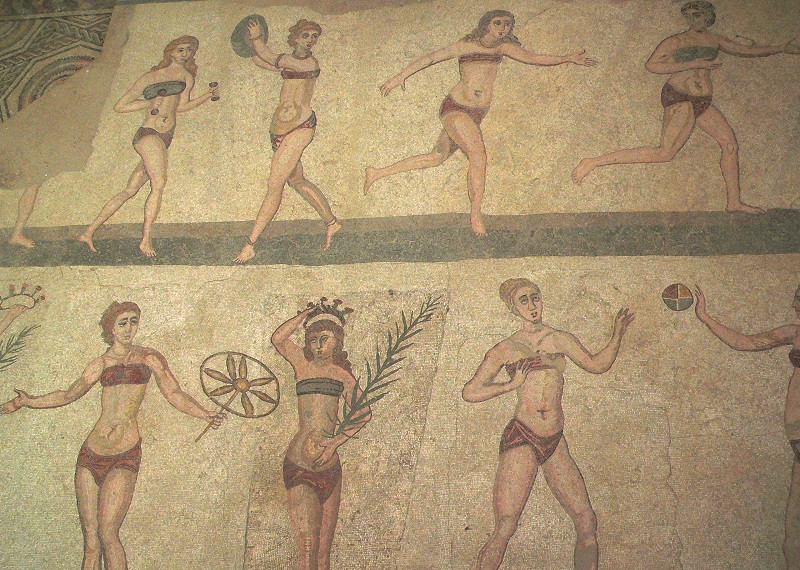
In it, we observe a few women doing various sports: weight lifting, discus throwing, running and ball games, which proves that, in practice, women had access to the same types of sports as men.
Of course, Among the upper classes it was frowned upon for a woman to drop by the hot springs In fact, there were many prostitutes there, who went to look for clients among the athletes. In some baths it was common to find a brothel, as demonstrated by the remains of the baths of Pompeii.

